
views
X
Research source
[2]
X
Research source
Cafes run on tight profit margins, require a significant initial investment, and demand long hours and many headaches of their owner-operators. Before abandoning all hope, however, do your homework regarding the steps required to start a cafe. With the right planning beforehand, your cafe will stand a fighting chance of success, and of becoming the small business of your dreams.
Planning Your Small Business

Write a business plan. No matter what type of small business you intend to open, a written detailed business plan is an essential first step in the process. A good business plan analyzes your business, its market, and its plan going forward for several years. It is essentially your "road map" to success. It also serves as your primary "sales pitch" for potential investors and financing. Consult How to Write a Business Plan for detailed information on the process. For instance, common components of a business plan include: Title Page and Table of Contents. Executive Summary, in which you summarize your vision for the company. General Company Description, in which you provide an overview of your company and the service it provides to its market. Products and Services, in which you describe, in detail, your unique product or service. Marketing Plan, in which you describe how you'll bring your product to its consumers. Operational Plan, in which you describe how the business will be operated on a day-to-day basis. Management and Organization, in which you describe the structure of your organization and the philosophy that governs it. Financial Plan, in which you illustrate your working model for finances and your need from investors.

Familiarize yourself with the legal requirements. Starting a cafe involves not only the legal "hoops" every new small business needs to navigate, but also the additional health and safety requirements of the food service industry. In the U.S., for instance, you will need to obtain a host of licences and permits (not to mention proof of insurance) on the local, state, and federal levels. To begin with, you'll have to determine the nature of your business organization. The options include (but are not necessarily limited to) a sole proprietorship, partnership, and limited liability company (LLC). There are pros and cons for each option. From there, you can begin investigating what business licenses and permits you will need to secure in order to open for business. Consider consulting your local chamber of commerce, the Small Business Administration , or similar group for assistance. For tax purposes in the U.S., you'll also want to secure an Employer Identification Number (EIN) from the IRS. You may want to consider hiring a business attorney to help you navigate the legal processes.
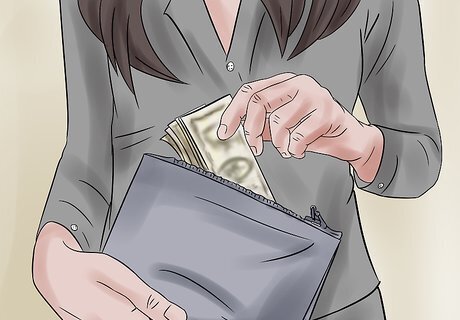
Secure funding for your business. In your business plan, you determined how much funding you need to start a cafe business. To meet these start-up costs, you'll probably have to be creative. Contact investors, apply for loans, dip into your savings, and exhaust all reasonable possibilities to secure funds. Take the time to scout out the best options for securing a small business loan from a financial institution. You may or may not find your best deal at a bank with which you already have a financial relationship. Organizations like the U.S. Small Business Administration can help walk you through the process of securing your best loan. Your funding options need not stop with a bank loan and your own savings. Try to entice investors or partners with your business plan, for instance. If you are willing to deal with the potential pitfalls of doing so, ask family and friends for personal loans. Your creative options can range from running a crowdfunding campaign to renting out the third floor of you home. Always keep on the lookout for prospective funding sources.
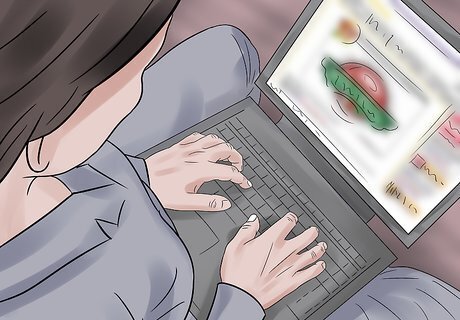
Create your brand identity. Develop your logo, graphics, business cards, and all other promotional materials. Try to find a consistent theme that represents your vision for the cafe. This will help you coordinate the colors you use in your décor, on your menu, and other marketing items. Consider the target clientele for your cafe based on your observations and research of the surrounding community, and your business goals. Is it nine-to-five office workers? College kids? A tech-savvy crowd, or people looking for quiet conversation? Let this information help guide your branding as well. Your ultimate goal is to create "one voice" that speaks across everything from your promotional materials to your lunch menu to your bathroom decor. If you are having trouble developing a brand identity, or sense that your concept is becoming too complicated, seek out the services of professionals that focus in this area.
Preparing Your Cafe

Find the right location. Investigate several different storefront locations. Look at various places that are available for rent or sale. Choose the place that best fits your budget and provides an ideal location for customers. If it has been previously used as a cafe, this may work to your benefit because you won't need to spend time and money converting it into a cafe. Of course, consider why that previous cafe failed. Personally scout prospective locations. Count how many cars or people pass by over an hour during different times of day. People will seek out good food and drink, but a new cafe will have a better chance of building a loyal clientele if it is in a high-traffic area.
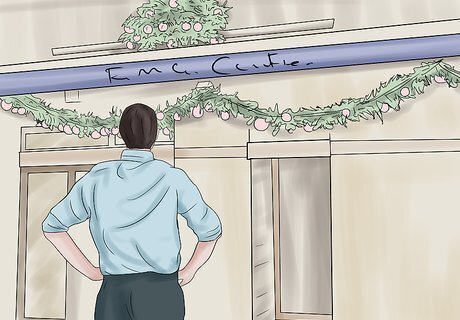
Adjust the layout and decor to suit your brand. Even if your chosen location is a former cafe left in good condition, it will usually pay to make updates and changes to suit your particular vision. That said, keep your budget in mind and don't go overboard in the remodeling. Try to match the brand of the business with a product that will be unique, unusual, but will also help to sell the business While important, don't focus solely on things like wall color and lighting fixtures. For a cafe in particular, make sure you create a kitchen area with good traffic flow that allows those preparing food to move their feet minimally. While you'll probably want your cafe to be a comfy spot where customers will want to come and linger, lay it out so that it is friendly to take-away customers as well. People who grab their food or drink to go cost you less to serve and make happy.

Acquire the equipment needed to run your cafe. If you are repurposing a previous cafe, you may be able to utilize some existing tables, chairs, booths, credit card machines, etc. Even so, you will certainly need to purchase or rent at least some of the equipment you will require. Look for savings where you can find them. Perhaps a mix-and-match, eclectic furniture decor can work with your cafe theme, allowing you to save some money by picking up used tables, chairs, and other pieces as you find them. For a cafe, though, don't skimp on the key equipment, such as an espresso machine. If coffee is going to be your focus, make sure you can produce a quality product. People who pay a premium for coffee tend to know the difference. Research equipment rental vendors in your area. Consider multiple options to find your best deal, because you need to find savings wherever you can.

Build your menu. Decor, ambiance, and the like are of course important to your cafe's success, but people won't come back if the food and drink selection isn't up to par. Take time to develop a menu with maximum appeal that won't ruin your budget. For a cafe in particular, it is often better to keep the menu somewhat limited, especially at first. Focus on key items that complement each other, such as a selection of pastries that pair up with your coffee options, or a manageable array of soups and sandwiches. Make sure you are an expert on the items on your menu, whatever its size. If you aren't already a coffee expert, research the subject extensively. Know where your produce comes from. Be able to discuss the sourcing of the meats in your sandwiches. Display a personal connection to your food, to separate you from the big chains.

Develop relationships with suppliers and distributors. You need to secure the best and most cost-effective ways to obtain all the food and other items you need to run your business on a daily basis. To do so, you need to build solid relationships with reliable suppliers who consistently get your food, napkins, and new menus (among many other things) to you on time and at a good price. Suppliers are the lifeblood of a cafe. Without product that's there when you need it (at a fair price), you have nothing. Ask other restaurant and small business owners in the area which suppliers they use. Once you've selected your suppliers, work to establish and maintain a good working relationship with them. Don't be afraid to make a switch to get better prices or better service, though.
Opening for Business

Market and promote your cafe. If no one knows you are going to be opening soon, you won't have the customer turnout you desire and need. Start spreading the word early and often. Use press releases, social media, word of mouth, posters, and any other method you can think of to help people learn about your new cafe business. While spreading the word, try to remain consistent with your brand identity in your promotional materials. How to Open a Small Business provides a strong collection of information on preparing for your business' opening. Look particularly at Part 3 or the article, for information such as: Establishing a marketing budget for your grand opening (which some say should be 20% of your first year's marketing budget). Using traditional media, like TV, radio, and newspapers. Using digital media like social networks, websites, and advertising technology such as Google Adwords.
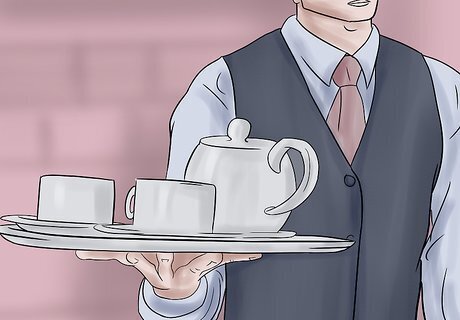
Hire and train your kitchen and waitstaff. These people will be the backbone of your business. You will rely on your kitchen staff to make everything to the customers' liking, and you will rely on your waitstaff to give the customers a friendly and pleasurable experience. Familiarity with the cafe business is of course helpful, but pay at least as much attention to personality, temperament, and attitude. Conduct thorough interviews, and ask insightful questions (how they have dealt with adversity before and how they would deal with a particular example in the cafe, for instance). Remember, on the rare instances when you are not in the cafe, your employees will be the face of your business. Once again, How to Open a Small Business provides useful information on hiring employees, including details on your initial responsibilities as an employer.
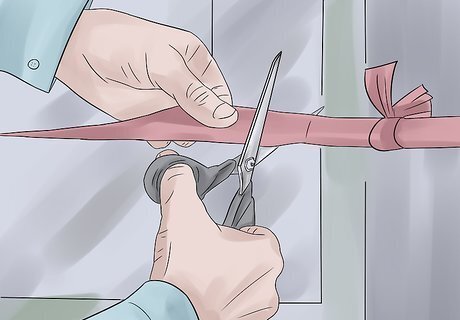
Open for business when you are ready. Once everything has been completed and your business is ready for the public, open the doors. Be prepared for kinks in the process, but take action to resolve them quickly so everything can run smoothly. You want your official grand opening to go as flawlessly as possible, so it may make sense to do a "soft opening" beforehand as a practice run. Invite a small group of guests, maybe even just friends and family, and run through the operation of your cafe. See what works and what doesn't before the official grand opening. Make your grand opening "grand" with ample advertising, giveaways, and whatever else will make people notice and be curious enough to stop in. Also think about the best day and time to officially open. When will your target clientele be most likely to come in? A workday morning? During the lunch hour? Weekend brunch?

Keep them coming back. Getting customers into the door once is only the beginning, of course. Most cafes rely on a repeat clientele to survive. A great product, nice ambiance, helpful staff, and reasonable prices will all help, but don't be afraid to get creative in finding ways to turn customers into repeat customers. For instance, offer a loyalty program. It's not just a way to retain customers, it's also a good tool to understand them and build strong relationships with them. The lure of a free coffee after all the spots on a card are punched out can be enough to bring people back until it becomes a habit. Beyond simple punch-cards or coupons, there are a number of loyalty platforms using QR code.They make it very easy to offer a loyalty program and they are also cost-effective. Whatever method you use, do not see a loyalty program as giveaways. Rather, see it as a powerful marketing tool.















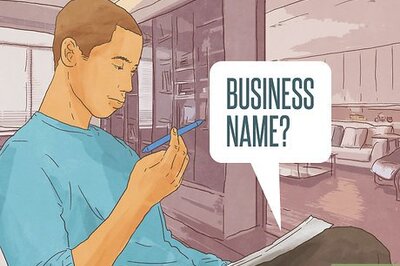



Comments
0 comment